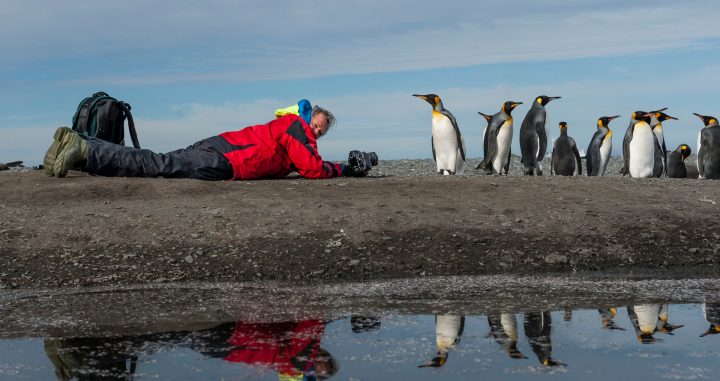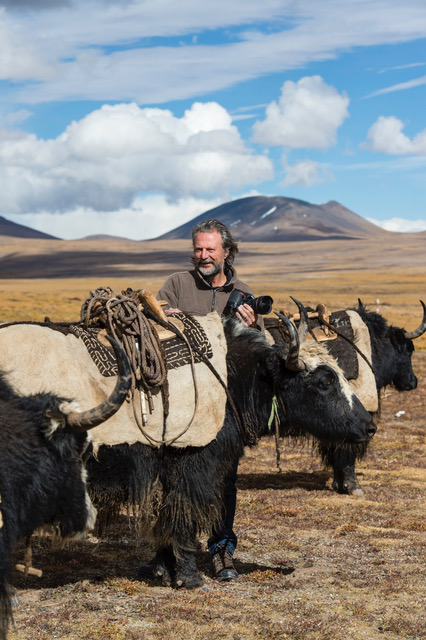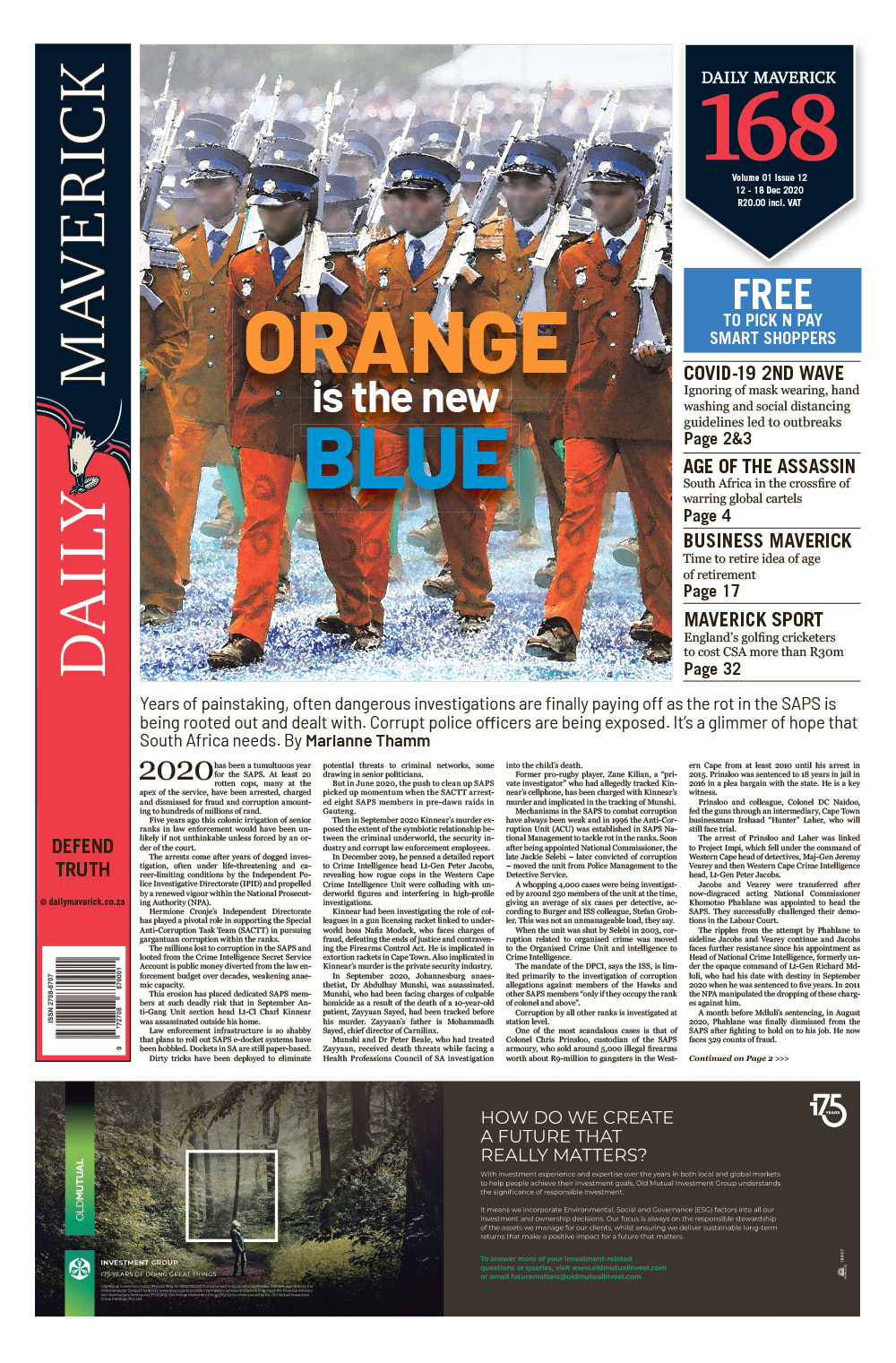Book Review 168
To the Edges of the Earth: A Journey into Wild Land – a heartfelt cry over environmental degradation

The story of a four-year quest to explore and document Earth’s rapidly diminishing wild realms; a contemporary tale that reflects the late Victorian plea by Gerard Manley Hopkins to protect the wilderness.
What would the world be, once bereft
Of wet and of wildness? Let them be left,
O let them be left, wildness and wet;
Long live the weeds and the wilderness yet.
– from Inversnaid by Gerard Manley Hopkins
English poet and Jesuit priest Gerard Manley Hopkins penned Inversnaid, his famous cri de coeur about the need to protect wilderness in 1881, at a time when his Victorian-era, early industrialised Britain was experiencing significant social and environmental change.
Hopkins was remarkably prescient in his warning, although his poem was focused on a 19th-century small rural community on the east bank of Loch Lomond in Scotland.
Now, 140 years later and when the world is being subjected to exponentially greater environmental degradation, destruction and abuse, an equally heartfelt and similarly beautifully composed cry from the heart has been published. This time, it emerges from a broad, sweeping exploration of wild areas across the entire planet – and its warning is significantly more urgent.
“Wilderness is now the rarest commodity on earth,” says photographer, conservationist, writer and explorer Peter Pickford in his new book, To the Edges of the Earth: A Journey into Wild Land.
Although Pickford is the author, he is only half of the team responsible for it. Beverly, his wife and lodestar of more than 40 years, makes up the other half – “my muse, my critic, my sounding board, my tonic, my refuge and my friend”, he acknowledges.
The book is an eloquent and highly readable account of their four-year quest to document and publicise threats to the irreplaceable but rapidly dwindling wild lands and wilderness areas that still grace our planet.
The couple, both accomplished photographers, have been exploring wild places together for decades, with their experiences recorded in nine earlier books that started with Wilderness Dawning in 1987.
By the time they finished their ninth book in 2010, Pickford says he and Beverly were becoming “increasingly distressed” by two ideas: the disappearance of wilderness; and whether they could personally do anything to arrest this global trend.
“The first was a sense of panic as to how rapidly wild space and the life that thrived there was diminishing. The second was that we felt compelled to act, to do something … I was haunted by the words of Gandhi, ‘Be the change you want to see in the world’.”
So they decided that the most meaningful contribution they could make would be to explore and record, through their photography, the last wild lands left on earth.
At times, Pickford’s story is remarkably inspiring and upbeat, but there are also moments when it is deeply concerning and distressing. His urgent message – just like that in Sir David Attenborough’s recent documentary A Life on Our Planet – is that he has witnessed profound environmental changes, and particularly the loss of wilderness. Significantly increased conservation and awareness are critical if such wild areas are to survive, he writes.
“My passion for wilderness came to me as a youth at a time when wilderness was plentiful. I have, in the space of my lifetime, watched that plenty be whittled away until what is left is rare. It is that rarity, and the speed with which it has come about, that fuels my passion for wilderness, my desire to ensure that it endures intact.”
For this particular venture, the Pickfords first needed to define their notion of wilderness, which they decided would be, “vast, contiguous stretches of land in as natural a state as possible”, with the crucial element being an absence of any artificial light. There could still be people present in those landscapes, as long as they were not there to “dominate” the land, changing its character or altering its physical status.
They also needed to limit their quest to what was physically and financially manageable, so they opted to explore a single region on each of the seven continents:
Antarctica and the Sub-Antarctic islands such as South Georgia;
Patagonia, the High Andes and the Chilean archipelago in South America;
Alaska and the Yukon in North America;
the Arctic region of Europe, particularly Svalbard;
the Tibetan plateau in Asia;
the Kimberley region of north-western Australia; and
the Skeleton Coast, Caprivi and deserts of Namibia in Africa.
During the course of the next four years, between 2011 and 2015, they traversed these wild lands in these regions by ship, plane, helicopter, kayak and – mostly – in their own specially adapted Land Rover.
The first outcome of this epic journey was Wild Land, a major, large-format photographic book, described as “an epic, unparalleled portrait of some of the earth’s most untouched places”, which was released in August 2018.
The just-published To the Edges of the Earth has its genesis in, and complements, this earlier photographic book, but in an entirely different format. It’s the story of their journey written in a diary form that is part travelogue, part adventure story, part natural history and part philosophical musings on topics such as wilderness, conservation, hunting, indigenous people and the sustainable use of natural areas. Almost entirely word-driven, just 12 of its 400 pages contain black-and-white images.
Photographs may each be worth a thousand words, but there’s a much smaller ratio between Pickford’s prose and his and Beverly’s photographs. His words are evocative; his descriptions rich and tactile; his musings are deep, honest, fearless and thought-provoking.
For example, he writes about the Jago River area in the Arctic National Wildlife Refuge of Alaska that is “as wild as a place can be”.
“It is the earth untouched, accessible only during the brief window of the Arctic summer. I walk away from the camp to feel it more fully, for I have found that it is mostly, or perhaps only, when I am by myself that there rises in me the context of the land about. As if it were solitude that opens some inner ear. It brings about in me some slow release, like sucking chocolate on my tongue.”
Alaska also provides some heart-rending moments of people abusing wilderness that Pickford relates with searing intensity. They find the most northerly tree – a black spruce tree, “a landmark final soldier of the boreal forest” on the border of the tundra. But to their horror, they also discover that, inexplicably, someone has ring-barked it.
“It is 230 years old, of neither great height nor of substantial girth, but what is beyond belief is the fact that it has been killed by a vandal … and in its sad, brown skeleton rising out of a thicket of low willow, I have a sense of foreboding about the future of humankind. A conviction that in this senseless act lies the prophecy of our final human destiny, which will not fall to any intellectual authority or cognisance, but to stunted intellect in which brutality and selfishness supersede all regard.”
Later, as he and Beverly are watching and photographing a family of six caribou, a truck pulls up next to them and its hunter occupants casually shoot all six animals right in front of them. “Fifty percent of all the life we have seen for hundreds of kilometres – obliterated,” Pickford mourns.
Earlier, they’d witnessed two bow hunters shoot a caribou and then watch it struggle with an arrow through its shoulder without any attempt to end its suffering. After several hours, the hunters went to sleep in their truck while the wounded animal struggled up the valley. A short single sentence conveys all the horror and pain of the Pickfords’ experience: “We lie in bed awake and sore right through.”

Tibet by Peter and Beverly Pickford Wildlife Photography
Ironically, perhaps, it’s on the high Tibetan plateau, where strict Chinese bureaucracy constantly frustrates their desire to explore and photograph this wild country, that they are able to find and experience places of pure wilderness, with all the attendant joy that such landscapes evoke.
“After two hours, as the light is growing warm with the waning afternoon, we stop to photograph two groups of kiang [wild asses] near the road. Sweeping the open surrounds, I count 48 kiang within view and even more goa [Tibetan gazelle]. There are many small ponds in depressions, and aggregations of bar-headed geese and ruddy shelduck roost on the sandbars of the larger ones. The road climbs steadily higher, our view to the south and west expands, and I feel happy to bursting. This is what we came to find. I want to stand on one of the small knolls and throw my arms wide and shout ‘Yes!’ to the sky.”
Later, in Drysdale in the Kimberley area of Australia, the Pickfords camp in an isolated place that embodies what they’ve been aiming for: “To the north there is not a single road, track or path between us and the sea more than a hundred kilometres distant … Standing on a rocky promontory up one of the hills we have climbed, I feel as if I am on the artery to the heart of our quest, for I am surrounded by wild land.”
At around the mid-point of their travels, in the high wilderness of the Tibetan plateau, Pickford reflects on his life and distils his belief in what he and Beverly are attempting to achieve with their quest: “I am 56 years old and I feel this morning the same unbridled vivacity in this place [Tibet] as I did at 15, wandering the banks of the Chobe River in Botswana on safari with my parents. I am glad that the feeling is still with me. I have devoted my life to the places that take me there, to the awareness of them, to their tenure in the face of human encroachment, and to their conservation. It has made my life full, and the battles I have fought have seemed worthwhile.”
There have been difficult times when, “standing opposed to the inexorable tide of human expansion”, he feels helpless and insignificant. But that is no excuse for shirking his duty to stand up for what he knows to be “magnificent and irreplaceable”, he explains.
“I will pass on to others only half-won battles, but there will be the sense in them that has given my own life a purpose beyond myself. And standing in this frozen, wild dawn, I encourage all to know that, no matter what the odds, there is a remarkable power in one voice raised in sincere objection.”
Ay, there’s the rub: the “inexorable tide of human expansion”. When Hopkins composed Inversnaid, the world population was somewhere around 1.4 billion. Today it is close to 7.8 billion and increasing by more than one percent every year. How can wilderness and wild lands be sustained in the face of this vast growing tide of people?

Namibia by Peter and Beverly Pickford Wildlife Photography
It’s a complex problem that they find manifested particularly in northern Namibia, the last region that the Pickfords explore on their journey, where the wild nature of the Hoarusib, Hoanib, Uniab, Huab and Ugab dry river valleys is being threatened – some already lost – by an increasing number of visitors and exploitation by residents.
It’s a widely held belief that natural areas and wild places are best conserved when they are revered by people – “a wilderness precious in a person’s heart is a wilderness protected”, Pickford explains. But people only get to know and love such places by visiting them, and the increasing global population means more people are being drawn to wild places, with inevitable consequences.
For him, the two greatest threats to the survival of wilderness are an increasing number of people; and the misguided notion of many of them that the value and worth of wild areas can only be measured in hard monetary terms related to the exploitation of the natural resources found there.
He describes this attitude “a great selfishness” that threatens “like a guillotine blade poised in the sky”.
“Television has brought [wilderness] into our living rooms as an adventure story, but it is a real place. What lives and is wild on our planet exceeds anything humankind could ever imagine. It is amongst the greatest privileges in life to know any facet of our wild earth. And there is nothing more valuable that we could give back than to keep it that way,” he concludes. DM168
To the Edges of the Earth by Peter Pickford is published by Bookstorm.






















 Become an Insider
Become an Insider
Looks like a book I need to read. Thank you for highlighting some haunting words, and writing about this really important topic. I’ve always thought the best legacy anyone could leave would be land that has severe restrictions in place on any human activity. The centre of the Kenilworth racecourse harbours critically endangered species in a little island if biodiversity in the city. Why? Because humans do not set foot there. We need many, many more spaces like that all over our planet. Humanity-free zones.
Well, I can dream on behalf of our planet, can’t I?
Thanks John for so eloquently drawing attention to what sounds like a very worthwhile read. To accompany David Attenborough’s A life on our planet. A shame though that, despite this apparently fast growing awareness of the need to curtail the continued destruction by us humans of nature, this destruction continues to be authorised and pursued with ever greater vigour by us.
There are no words to describe the feeling of complete hopelessness at the seeming unstoppable devastation that is being wrought by mankind on this planet we call Earth. I truly feel that it can be highlighted as much as you like, and I laud those who do, but really ? , is this going to make a difference to the unceasing greed of humans? I wish there were solutions.